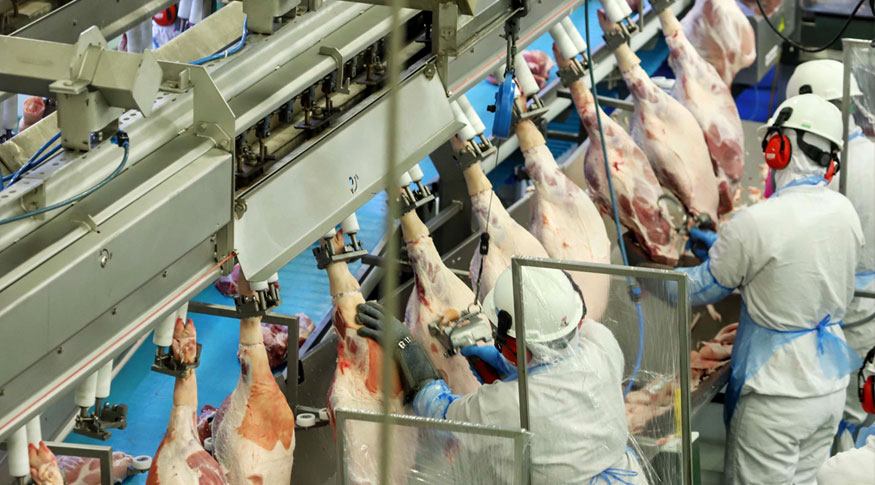Industrial production
Inflation in industry increases 1.86% in August, all activities rise
September 29, 2021 09h00 AM | Last Updated: September 29, 2021 03h52 PM

In August, the industrial prices rose 1.86% over the previous month. All the 24 activities surveyed rose their prices, which only happened in August 2020. The data are from the Producer Price Index - IPP, released today (29) by the IBGE, which measures the change in the prices of products at the "factory gate", without tax or freight, of 24 activities of the mining and manufacturing industries. In the year, the cumulative increase in the industrial prices hit 23.55% and, in 12 months, 33.08%.
“The high demand of the foreign trade and the devaluation of the real against the dollar have been impacting the industrial prices in the domestic market. For example, the movement in the prices of iron ore and crude petroleum oil affects almost directly the chemical, refining and metal sectors. In the food sector, the exports of commodities, like soybeans and corn, press upwards the costs of animal food and, as a consequence, those of meat,” clarifies Manuel Souza Neto, manager of the IPP.
The food sector was the one that mostly influenced the general result of the August´s IPP (0.51 percentage points). Compared with July, food increased 2.19%, being the seventh positive rate recorded along the year (the only negative rate was reported in June, 0.14%) and the second highest index in 2021, just behind the rate of 2.66% registered in April. The sector accumulates a rise of 12.47% in the year.
In August, the increase in the prices of frozen poultry and giblets were among the major influences on the index of the food sector.
“The rise in the prices was impacted by both the increase in the cost of animal breeding and the higher demand. Beyond exports, the domestic market was also impacted by the return of the face-to-face school classes and the trend to replace beef by chicken,” highlights Souza Neto.
He added that the combination of off-season and climate factors contributed to rise the prices of some food.
“The production of sterilized milk/UHT/long life milk was influenced by the drought in the middle of the year, which decreased the acquisition in the dairy belts. As a result, the price of the product and all its derivatives increased. Roasted and ground coffee was influenced by the severe winter, with frosts in important producing regions, which also impacted the harvest of sugarcane and its derivatives,” highlights the researcher.
“Slaughtering and manufacture of meat products” (2.72%), “manufacture and refining of sugar” (3.64%) and “toasting and grinding of coffee” (6.54%) were the industrial groups with changes in prices above the average of the food sector.
On the other hand, the activity of oil refining and ethanol products (1.91%) rose for the fourth month in a row. The August´s rate was lower than that of July (3.27%), though still higher than the other two of these four months. In the year, the sector accumulates an inflation of 47.03%, the highest rate for August in the time series. “Gasoline, except for aviation”, “diesel fuel” and “ethyl alcohol (anhydrous or hydrated)” were the most intense influences on the sector´s prices.
The prices in the chemical industry rose 2.82% in August, the highest rise since April (4.73%), accruing a change of 37.34% in the year and of 50.49% in the last 12 months.
“These results are mainly linked with the international prices, including several raw material, either imported or not, like naphtha. One of the major responsible by the increase is the group of fertilizers, which rose 6.93% in the month, accumulating 65.98% in the year and 73.63% in the last 12 months. These two cumulative rates are the highest ones in the entire time series,” highlights Souza Neto.
Having risen 2.58%, Basic metal also stood out this month, its 14th positive rate in a row. Among all the activities surveyed, this sector already shows the third highest cumulative index in the year (40.59%) and the second one in 12 months (56.98%).
“The results in the last months are linked with the behavior of the groups of steel products and non-ferrous material (copper, gold and aluminum), whose prices behave differently. The former group is affected by the prices of iron ore and by the change of the dollar against the real, as well as by the recomposition of stocks in the consuming chain. In the latter group, the values of non-ferrous material are linked with the quotations in foreign commodity exchanges,” concludes Souza Neto.
More about the survey
The IPP aims at measuring the average change of sale prices received by the domestic producers of goods and services, as well as its evolution over time, signaling the short-term inflationary trends in Brazil. It is a key indicator for the macroeconomic follow up and, consequently, a valuable analytical instrument to decision takers, either public or private.
The survey investigates, in slightly more than 2,100 enterprises, the prices received by producers, free from tax, tariffs and freight, defined according the most usual commercial practices. Nearly 6 thousand prices are collected monthly. The complete tables with the results are available at Sidra.

















